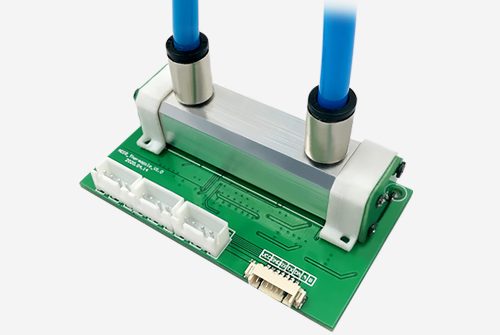NDIR (Non-Dispersive Infrared) gas sensor play a crucial role in gas detection technology, offering highly accurate and reliable detection of specific gases in various applications. These sensors have become integral in industrial safety, environmental monitoring, and indoor air quality control. In this article, we will delve into the working principles, applications, and significance of NDIR gas sensors in gas detection technology.

Working Principle
NDIR gas sensor operate based on the principle of infrared absorption. When a target gas passes through the sensor, it absorbs specific wavelengths of infrared radiation. The sensor then measures the amount of absorbed radiation to calculate the gas concentration. This working principle lends NDIR sensors their high precision and stability, enabling them to function reliably in diverse environmental conditions.
Applications
Industrial Safety: We offer NDIR gas sensors for a wide range of hazardous gas monitoring in industrial environments. Carbon monoxide, carbon dioxide and methane are quickly identified to provide timely alerts and protect workers’ health.

Environmental Monitoring: These sensors measure the concentration of greenhouse gases in the atmosphere and help scientists observe climate change. Additionally, NDIR sensors contribute to urban air quality monitoring efforts, providing vital data for government and public awareness of air pollution levels.
Indoor Air Quality Control: Within buildings and office spaces, NDIR sensors are utilized to monitor the levels of carbon dioxide and other harmful gases. This ensures that indoor air remains fresh, promoting the health and comfort of occupants.
Significance
NDIR gas sensor offer several advantages that underscore their significance in gas detection technology. Their high accuracy, stability, and ability to operate in harsh conditions make them an ideal choice across various applications. By promptly and accurately detecting specific gas concentrations, NDIR sensors aid in ensuring industrial safety, environmental monitoring, and indoor air quality control. As technology continues to advance, NDIR gas sensors will play an even more important role in creating a safer living environment.
Conclusion
In conclusion, NDIR gas sensors are pivotal in gas detection technology, providing precise and reliable detection capabilities. Their impact extends to industrial safety, environmental awareness, and public health, making them indispensable tools in our modern world. With continuous innovation, NDIR gas sensors will continue to evolve and further enhance their role in protecting people and the environment.
